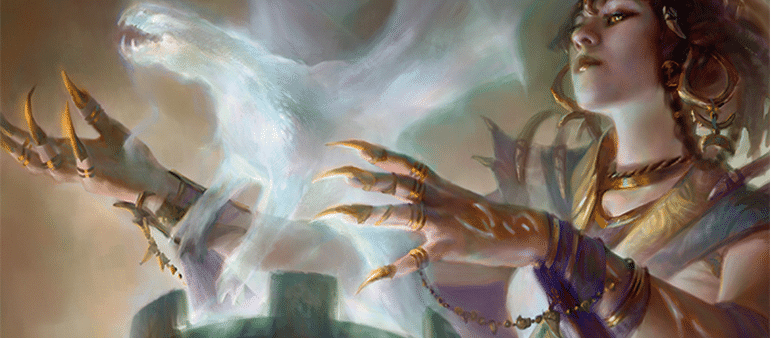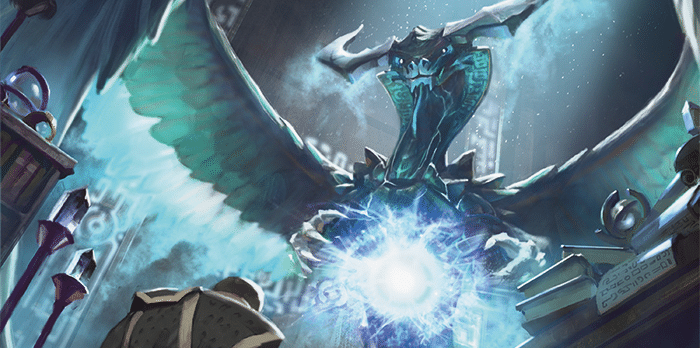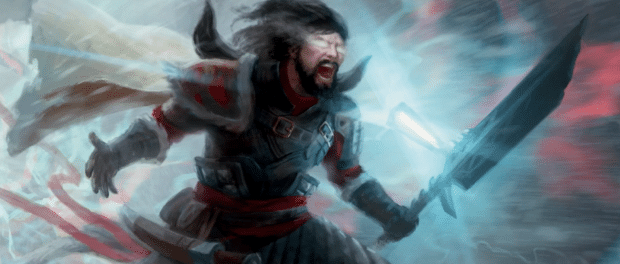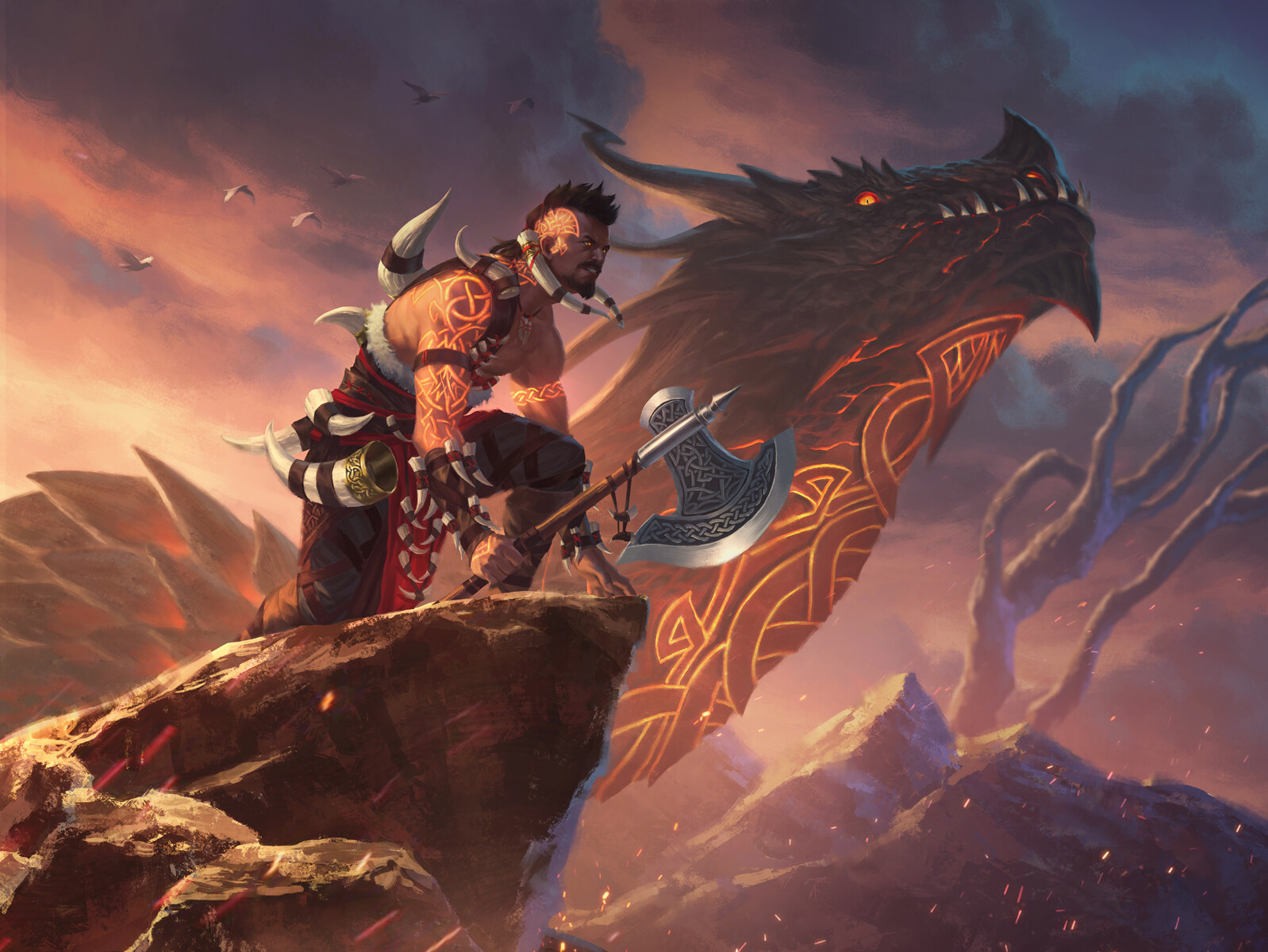Digging Through Time Part 5&7/8ths
I'm still not in a position where I'm ready to write the actual article series about this Cube so here we are again, talking about mechanics! I'm going to
actually share the list this time because I already have a working version of the Cube that I've been playing.
As a reminder, I'm looking for these three things from each mechanic:
-Power Level. The mechanic has to do something impactful and appear on impactful cards. However, the mechanic cannot be overpowered.
-Ease of Implementation. The mechanic has to be easy to work into the Cube without heavy support or without heavy amounts of parasitic enablers.
-Fit and Feel. Some mechanics might reach the first two criteria but not mesh well with the rest of what I want to do here.
Innistrad: Midnight Hunt
Day/Night
I'll be honest, I really dislike the implementation of the Daybound/Nightbound mechanic in Innistrad: Midnight Hunt and Innistrad: Crimson Vow. This mechanic had a ton of promise, but the net result of what they did with the mechanic was to make Werewolves that are functionally similar on both sides but are oversized on the back. There were barely any cards like
Mayor of Avabruck or
Huntmaster of the Fells which do something slightly different on the front and the back. I get that it's hard to design cards that have different abilities while in play but still provide a consistent play pattern. However, I think the implementation of the Daybound/Nightbound werewolves was so safe that it ended up not being fun. As for the non-werewolf day/night cards, as interesting as cards like
Gavony Dawnguard and
Sunrise Cavalier may be, they aren't really worth the effort. Adding an entire
tracking token to the game for one or two cards just doesn't feel worthwhile for what the resulting play patterns may be.
In short, most of the werewolves are boring and the non-werewolf cards are uninspiring. I could see myself playing
Brutal Cathar at some point as a test as that card fixes the Werewolf problem I addressed above, but that's all.
Coven
Coven is an interesting mechanic that rewards players for having creatures with multiple different powers on the battlefield. There aren't a ton of inspiring cards with the mechanic, but it's low impact enough that some cards could easily have a home here. I'm not enough of a masochist to put
Augur of Autumn and
Contortionist Troupe into this Cube, but
Candletrap seems like a power level appropriate peice of interaction.
Disturb
The disturb mechanic is akin to
embalm on steroids. Like embalm, disturb provides another way for creatures to be recycled from the graveyard. Unlike embalm, disturb makes heavy use of double-faced cards. I don't mind double-faced cards as a design tool anymore. Ever since I double-sleeved my Cube, I can have people actually transforming the cards without damaging them. However, I still don't like the fact that the backside of disturb cards can't be seen when they're in a sleeve. None of the current disturb offerings are inspiring enough to make may want to play them in spite of their double-facedness. For now, I think I will be excluding cards with disturb. However, I could see myself playing
Katilda, Dawnhart Martyr,
Covetous Castaway,
Devoted Grafkeeper, or
Dennick, Pious Apprentice at some point in the future.
Flashback
Flashback was already on the table for mechanics I could use without needing to worry about fit and feel, but I wanted to touch specifically on the Flashback cards from this set. For the first time, Flashback was allowed onto gold cards! These new golden girls don't feel out of place and are generally speaking good designs. I'm hoping to make room for some of them!
Decayed
Decayed is a cool mechanic that was a limited roleplayer in Midnight Hunt. There's nothing keeping decayed out of this Cube other than the fact that most of the decayed cards just don't quite reach the power level threshold I need them to in order to make the cut. The most this mechanic has to offer right now is some cool stuff for aristocrats decks which I don't plan to support.
Innistrad: Crimson Vow
Exploit
Exploit returned as a mechanic for the Zombies! And many of the new exploit cards have
the same aesthetic vibe as the Zombies from the
Sultai and
Silumgar clans! While there isn't enough here for a full-on "
exploit matters" archetype, there are at least a couple of individual cards that are hits.
Graf Reaver is a welcome addition!
Training
Reverse Mentor here is a pretty decent mechanic, but unfortunately, most of the cards are not. Most training cards are over-costed and under-statted for my Cube. However,
Hopeful Initiate looks like a decent inclusion since it can get quite big very quickly. I'm slightly tempted by
Savior of Ollenbock as another White reanimation spell, but this one looks weak enough that I might avoid it for now. In short, Training is a cool mechanic, but there are only a couple of cards that look like decent inclusions for me right now.
Blood Tokens
Blood tokens are a new "junk artifact" alongside Clues, Food, and Treasure. These tokens are a great way to help fill the graveyard and smooth the game by effectively giving every card in your hand Cycling

. The fact that the blood tokens are artifacts can also help with metalcraft and affinity abilities. While that isn't super relevant to the current version of the Cube, I'm hoping to change that fact in the near future. Unfortunately, much like the rest of Crimson Vow, the majority of the blood cards are underpowered. However, I think
Voldaren Epicture and
Blood Fountain as one mana cards with broad applications in the previously noted archetypes (as well as reanimator) make them good options for the Cube.
Likewise, if WOTC prints MH2 quality blood cards in the future, I will probably be including some of those!
Cleave
The much-maligned Cleave mechanic was a topic of hot debate in the Cube community when it was first revealed. Some find the square brackets a little hard to grasp. While I have come to disagree with that assessment through testing, I don't think very many cleave cards will be showing up in the Cube. As with blood, most of the cards are just too weak. Having said that, I like
Dread Fugue as an extra 1-mana hand disruption effect, and
Dig Up as a green cantrip/Golgari tutor. I will likely make room for those two cards if it makes sense.
Kamigawa: Neon Dynasty
Channel Lands
The Channel Lands are all great ways to help players use a larger percentage of their draft pool. I think many of my arguments as to why the Zendikar Rising MDFCs are so great apply to these cards as well. One thing I've found since writing my original post about MDFCs is that even though all of those cards are great and highly modal, they're almost never cards you want to pick up early in the draft. I feel cards like
Spikefield Hazard are weak enough that you don't really ever want to take them until the back half of the pack, potentially on the wheel. This isn't because the cards aren't good, but instead just because the spell side isn't the thing improving your deck. Instead, you're getting a land
that can also be a C-/D+ spell. In reality, the best MDFCs are along the lines of
Kazanduu Mammoth and
Glasspool Mimic, which are good spells that can also be lands.
The reason why I'm bringing this up in the discussion of the Channel lands is that I don't think I'm playing this entire cycle. I have been unimpressed by the "spell modes" of
Otawara, Soaring City,
Takenuma, Abandoned Mire, and
Sokenzan, Crucible of Defiance. These cards are still great because they're untapped lands in addition to being medium spells (I think they're arguably even better than the MDFCs I mentioned as being good), but the spell mode of these cards are just so expensive that they usually end up being fancy basics. I've played with
Otawara, Soaring City several times in the retail limited format and I have yet to actually channel it: having the land has almost always been better.
However,
Boseiju, Who Endures and
Eiganjo, Seat of the Empire are both legitimately great. Boseiju provides an additional mainboard-worthy artifact and enchantment destruction spell (something which is important in a format with extra enchantments running around), and Eiganjo is a playable creature removal spell stapled to a land. I think these cards are easy inclusions.
Also, despite my previous misgivings about
Otawara, Soaring City, I still think I'm going to let it out of the dog house for a while since I own a copy. I think the fact that my Cube has more high-power targets to bounce means that Otawara might find a mark more often than it does in retail limited. Likewise, I think
Takenuma, Abandoned Mire is synergistic enough with what black is doing in my Cube that I'm ok with playing it if I open a copy. I don't think these cards are as impressive as Eiganjo and Boseiju, but I think they are still good.
Nonland Channel
Channel was a mechanic that originally appeared on a few cards in Saviors of Kamigawa. However, none of those cards were particularly relevant in any format. These new nonland channel cards appear to be great options for supporting artifact and graveyard decks alike. Plus, several of these cards
basically have cycling. If it weren't for the fact that I'm explicitly avoiding cycling matters in this version of the Cube, I would be all over most of these cards for that reason alone. As is, I still think I will be playing a few of these cards as they all make for great glue options for several archetypes. Some of them are even enchantment creatures!
Mechs Vehicles
I didn't mention Vehicles in the Kaladesh section because I didn't want to play any of those cards. But, Neon Dynasty brings with it a bunch of
really powerful and awesome mech suits to play with. While these mechs don't quite spark the same feeling as my old school 2014/15 gameplay (I can't wait for people to tell me that's not old school), I think these cards have good enough gameplay that I'm just not worried about it. I don't think they will break the immersion. As I said as part of the
Lucky Paper Neon Dynasty Commander Survey:
TrainmasterGT Elsewhere said:
Shorikai, Genesis Engine is likely the biggest sleeper of Neon Dynasty. Its ability to dodge removal while creating value makes it a stronger engine than even many Planeswalkers.
TDFC Sagas
The Transforming Sagas from Neon Dynasty play extremely well. WOTC did a fantastic job making sure these cards both provided enough value to be playable and had big enough bodies to be relevant when they transform, without necessarily being way undercosted. As with the Disturb cards from earlier, I think these cards being double-faced is to their detriment. I like these designs but I don't think enough of them play specific enough roles in my Cube to justify their inclusion over other options. However, in the future, I could see myself playing some of these as conditions change. Specifically, I think
Michiko's Reign of Truth is an auto-include if I test enchantments again at some point. Likewise, The
Life of Toshiro Umezawa is a really solid card that could see flat out inclusion with the next update.
Reconfigure
Reconfigure is singlehandedly making me want to play
Toolcraft Exemplar and a host of other artifact aggro cards again! I've been considering with toying with an "artifact pile" archetype for a while, but it always seemed difficult to reach a reasonable density of artifacts without heavily speculating into colorless cards and dropping my current singleton restriction. While I still think the latter option is definitely going to make sense if I decide to go for the blue-based "pile" decks, red and white artifact aggro decks won't need this now thanks to reconfigure. Being able to play more equipment in my Cube without having to sacrifice creature density is a great way to help diversify aggro. It also helps to improve
Stoneforge Mystic without needing to add any (other) broken cards.
Rabbit Battery and
Simian Sling in particular look like really powerful ways to buff Red Aggro decks with more 1-drops that remain relevant into the late game. Reconfigure even provides Wrath protection! I'm really loving this mechanic and I think it will be a great addition to the Cube.
Modified, Ninjas, and Samurai
I'm happy to see new Ninjas, Samurai, and glue for equipment/auras/+1+1 counters. However, I don't see a reason at present to implement any of these themes into the Cube. Ninjas could make an appearance if I figure out a way to make mono-blue devotion work in a satisfactory manner, as they seem like an interesting option for Blue decks.
BONUS ROUND: The awful set that was Dungeons and Dragons: Adventures in the Forgotten Realms
Dice Rolling
I really hate the uncertainty the dice-rolling cards add to the game. You basically are forced to play a below-rate spell, and hope to get lucky and roll into a critical success. Sorry, the 5% chance that
Contact Other Plane is actually good does not make the other 95% of the time worth the cost of entry.
Flavor Words
There's a reason I named the spoiler thread for this set "Dungeons and Dragons: Adventures in the Forgotton Realms: Dripping with Flavor, and Excess Words!" Adding what amounts to flavor text in the rules text area allowed for some wonderfully flavorful cards (like
the Color Dragon cycle), but doesn't actually affect gameplay in any meaningful fashion. There's nothing stopping me from including these cards in the Cube, but almost all of the cards don't work mesh well with what I’m doing so I don’t see a reason to include any of them.
Venture into the Dungeon
I really want to like this mechanic, because it's an oddly non-parasitic way to reward players to build around a mechanic. Unfortunately, most of the enablers for this mechanic just don't do enough by themselves to justify the inclusion of this keyword and the baggage it provides. Yes, there are cool things you can do with Venture cards. But the power level and fun potential isn't here to justify the logistical headache of dragging around 24 dungeon tokens, at least for right now.
7/8ths Conclusion
I'll probably have to write another one of these for
Streets of New Capenna since I won't have time to write the actual article series before then, but that's no big deal. I do enjoy these little jaunts across Magic's Mechanics. I would love to hear your opinions on what I have to say here!
Thanks,
-GT










